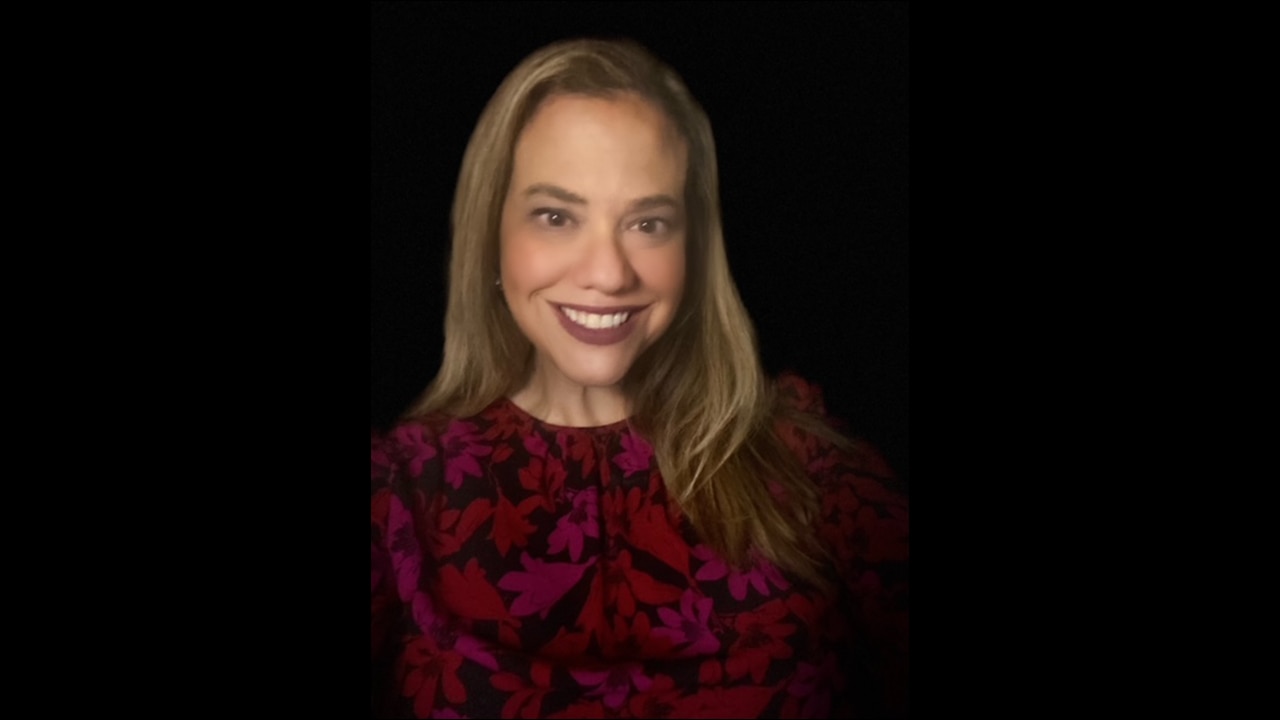Author’s note: This column is different from the previous mental wellness columns I’ve written for KSAT. I am putting myself out there for all to see in a very personal way so that others can know that working on your inside is worth it.
The year 2021 was my year of change. I changed more this year than in any of my 47 years because of one key component I figured out. We’ll get to that.
First, look at these pictures of me from the beginning of 2021 to now. You may see the side-by-side comparison photos and think this is a person who shed a few pounds. Or you may see someone who is happy, sad, aging, sagging – you can pick your fancy. What I see is a survivor, a fighter, and – most of all – a woman who did not give up.
Full disclosure: I was – and still am – obsessed with the People Magazine: Half My Size issue that comes out at the beginning of each year. This was my new year’s guilty pleasure, and one that I haven’t missed since I was a teenager.
I was taught from a young age that weight loss equaled success in life. So, this People magazine issue was my bible on not only how to finally lose weight, but how to get the life that I so desperately wanted. The brave souls who graced these pages, year after year, were my superheroes. They knew how to do something I couldn’t, which was lose weight and be happy… or that is what I thought.
I would wait each year to tear through the pages of this magazine, as if it was the roadmap that I would need to finally get my life in order. It was the one issue that put regular people on the cover to show how they drastically changed and improved their lives.
After countless years of promising to overhaul my life and stop my self-sabotaging behaviors, I realized that I was missing a crucial part of understanding the ingredients to positive, lasting change. It isn’t just about looking healthy on the outside.
The key component to building a better, healthier life journey was missing from these glorious magazine issues. That key is: You must make it as much of a priority to take care of and improve your inner self as you do with your exterior self.
My 2021 demanded change
So let me paint a picture of the year that has shown a real light on why I had to change to truly save my life.
When the world shut down in March 2020, we were all aware that life would never be the same again. There would be no magic 8 ball to predict what would happen.
Most of my pandemic days went something like this: Wake up, put on makeup and do my hair (so I looked like I had it together), and then attend countless Zoom meetings. After an exhausting day of having to be “on,” I would end up sitting on the couch eating food, drinking wine, and watching mindless television all to avoid the fear I had about what was going on in the world.
These new rituals became my comfort, until they no longer began to serve me, and started to have the opposite effect. I did this nightly dance because I wanted familiarity, and I craved normalcy, like so many of us did during this unprecedented time.
But I consequently ate and drank my way into a major depression and severe anxiety.
The depression and anxiety in 2020 were not my first time dealing with these mental health challenges, as I have suffered from them for most of my life. During my senior year of high school, I had agoraphobia (not being able to leave my house for fear something bad would happen, such as a panic attack or even death) and was unable to leave my house for six months.
In my early 20s, I had a stint in a mental health/eating disorder in-patient facility. And now, in my 40s, I continue to spend a large portion of my life coming up with new, inventive ways to get through a day without having a full-blown panic attack.
The kicker is — not only do I have a mental illness, but I also eat, sleep, and breathe this as a professional in the mental health field. You see, I’m fully aware that if I don’t make my mental health a priority, that the bottom could possibly drop, and yet I still struggled with it.
During the year that almost broke me, I was speaking and educating others about the importance of mental health and wellness on a weekly basis, while feeling that I didn’t know how to take care of myself.
My internal voice was constantly telling me that I was a fraud, and how could I tell others to take care of their mental health when I wasn’t doing it myself. I knew I needed help, but I was too ashamed about how far I had spiraled.
Finding what works for me
One particularly challenging day, I finally called a colleague and asked her to recommend a therapist. I’d participated in counseling since a young girl, so I knew the ropes. But therapy does not truly work if you are not open and transparent with your therapist. This time I had to do things differently no matter how hard a task that would be.
Therapists are not one-size-fits-all, so take your time finding the one who fits your needs and personality. It is hard to find a good therapist, so know that trial and error in finding one is part of the process. I wish someone had told me that when I was struggling to find a therapist who was the right fit for me.
When I started with my new therapist in October 2020, I never imagined how much this time would change my thinking, my behaviors, and my life. This therapist validated my feelings and was honest about the work that I would need to do to get better. She said she would be with me every step of the way, no matter how dark and scary it looked for me. That statement in our first session was a big key to success in our working, therapeutic relationship.
This began what I now call my year of finding what works for me. This concept was a huge shift for me, as I spent most of my life living for everyone else. I used to put other people’s thoughts, perceptions, and opinions about everything before my own.
In therapy this year, I worked on the trauma of growing up with a mental illness, as well as family trauma I was too scared to unpack before now. I never cried so much or felt so much. Going through this internal process gave me the confidence to incorporate some healthy new habits into my life.
In the past, I used to take on everything all at once, only to find myself giving up at the stress of doing too much, too fast. I needed to take baby steps. I wrote about goal setting in a previous column. Ultimately, these small steps helped me find pieces of myself that were missing.
20 changes in my life
In addition to the work I’ve done in therapy, here are 20 of the small, yet important, changes I incorporated in my life over the past year, in no specific order:
I wrote every day in my journal about my day – whether it was good, bad, or ugly.I listed five things I was grateful for each day. The fun part is that I could not repeat any one item for at least a year. This helped me to dive into really seeing the beauty in the everyday things that I may have overlooked or taken for granted.I used an app to track my food so I could see what I was eating and the choices I made when I emotionally was not feeling well.I started to exercise three to six times a week for my mental health. I was surprised to realize how amazing I feel when the endorphins kick in from a workout.I began reading for fun again, incorporating books that helped me stay present.I made music a part of my life again.I put shame aside and opened up to close friends and family about my journey in a way that I never had before.I never canceled a therapy appointment, which is something I used to do a lot when therapy became too difficult to process my feelings.I stopped making excuses as to why I could not see friends. Before, I only wanted to be around friends if I was at my best for fear they wouldn’t accept me or that I was a burden.I did not weigh myself because I did not want to define my success by the scale.I stopped drinking alcohol because I noticed nearly a year ago that it was affecting my mental and physical health in harmful ways.I finally accepted that I was not capable of doing some of this hard work on my own.I began speaking kinder to myself and stopped judging myself, which in turn helped me to treat others with more compassion and kindness.I adopted a daily mantra: “It is none of my business what others think of me – good or bad.”I started working on not letting others dictate how I thought I should feel about myself.I learned to ask others for help.I discovered the joy of sitting with my emotions, even when they are uncomfortable.I learned what real friendship and love looks like for the first time in my life.I worked on not apologizing for who I am, and appreciating all the parts that make me who I am.I realized the beauty of making mistakes, learning from them, and not letting them slow me down.
So back to these pictures. When I look at them, I am so proud of that woman in both photos because I see a resilient, determined woman who did not give up at any cost. I see someone I am proud to call my superhero, and more importantly, my friend. This, to me, is the greatest gift and lesson of all.
I took a much-needed journey to find myself again and regain my mental health and wellness. I share this so that others may feel inspired to work on themselves from the inside-out and so that we can normalize talking about mental health.
If you or someone you know is struggling with a mental health challenge or mental illness, there IS help. If you don’t know where to start, the National Alliance on Mental Illness has a thorough list of national resources you can use to start your mental wellness journey.
Read more like this on our Mental Wellness page:
10 ways to be positive in a negative world4 ways to change your approach to goal setting4 strategies for taking care of yourSELF post-quarantine7 techniques you can use to work through fear and anxiety when making a major decision5 ways to help combat anxiety in the age of COVID-19KSAT Explains: Your mental health in 2021 amid COVID pandemicWATCH: KSAT Community’s ‘Resilience in the New Year Virtual Mental Health Town Hall’Social media during the pandemic: The good, bad and ugly

